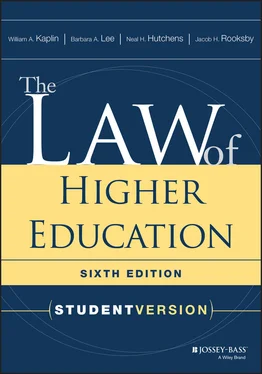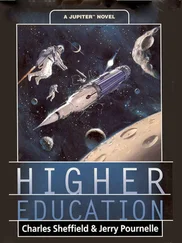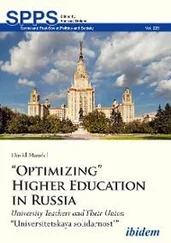An institution's charitable immunity may also protect it from liability if one of its students is injured as a result of a school-sponsored event in another state ( Gilbert v. Seton Hall University , 332 F.3d 105 (2d Cir. 2003)). Similarly, a New Jersey appellate court ruled that charitable immunity precluded an award of damages by a jury against the university when the parents of a student who fell out of a residence hall window and died sued the university for negligence ( Orzech v. Fairleigh Dickinson University , 985 A.2d 189 (N.J. Super. Ct. App. Div. 2009)). See also Green v. Monmouth University , 178 A.3d 83 (N.J. Super. Ct. App. Div. 2018) (upholding award of summary judgment to defendant university on charitable immunity grounds in slip-and-fall case brought by non-student plaintiff injured at concert held on university property but organized by entities not affiliated with the university).
Charitable immunity may not protect an institution, however, in cases where willful, wanton, or grossly negligent conduct or intentional acts are alleged. In Hardwicke v. American Boychoir School , 902 A.2d 900 (N.J. 2006), the New Jersey Supreme Court rejected the defendant boarding school's claim that the plaintiff's negligence lawsuit, alleging sexual abuse when he was a 12-year-old residential student, was barred by charitable immunity. The court also held that the defendant could be held vicariously liable for acts of its employees if they were found to have engaged in child abuse. However, in a more recent and high-profile case in the higher education setting involving Pennsylvania State University, a federal court held that the university was not vicariously liable for the sexual abuse of a minor committed by former football defensive coordinator Jerry Sandusky, as the abuse fell outside the scope of his employment under Pennsylvania law. See Doe 6 v. Pennsylvania State University , 982 F. Supp. 2d 437 (E.D. Pa. 2013).
The remainder of this section discusses the most frequently occurring subjects of tort litigation faced by colleges. Although negligence claims outnumber other types of tort claims, defamation claims are common, as are claims of educational malpractice (a hybrid of tort and contract claims, discussed below). The complexity and variety of a college's activities are matched by the complexity and variety of the legal claims brought by individuals who claim to have been injured by the actions—or inaction—of a college or its agents.
3.2.2.1 Overview.Higher education institutions are facing a growing array of negligence lawsuits, often related to students or others injured on campus or at off-campus functions. Although most college students have reached the age of majority and, theoretically, are responsible for their own behavior, injured students and their parents are increasingly asserting that the institution has a duty of supervision or a duty based on its “special relationship” with the student that goes beyond the institution's ordinary duty to invitees, tenants, or trespassers. Courts have rejected this “special relationship” argument for most tort claims, but they have imposed on colleges and universities a duty to protect students from foreseeable harm, such as in cases of hazing or the presence of dangerous persons on campus.
When a postsecondary institution is not immune from negligence suits under either sovereign or charitable immunity, liability depends, first, on whether the institution's actions fit the legal definition of the tort with which it is charged; and, second, on whether the institution's actions are covered by one of the recognized defenses that protect against liability for the tort with which it is charged. For the tort of negligence, the legal definition will be met if the institution owed a duty to the injured party, the institution failed to exercise due care to avoid the injury, and that failure was the proximate cause of the injury. Whether a duty exists is a matter of state common law. See Feliccia v. Lackawanna College , 175 A.3d 221 (Pa. 2017) (determining that an issue of fact existed as to whether a Pennsylvania college was required to have qualified medical personnel present at intercollegiate athletic events to satisfy a duty of care to the college's student-athletes). Typical defenses to tort claims include the claim that there was no duty (because the injury was not foreseeable), that the plaintiff's own negligence (called comparative fault) contributed substantially to his or her harm, or that the plaintiff assumed the risk of injury. If present, comparative fault or assumption of the risk can completely bar a plaintiff's recovery, or limit it, depending on the law in the jurisdiction.
Negligence claims against colleges and universities are typically a result of injury to a student or other invitee (an individual who is lawfully on campus or participating in a college or university activity) as a result of allegedly defective buildings or grounds (premises liability); accidents or other events occurring either on or off campus as a result of instructional activities, cocurricular activities, or outreach activities; or alleged educational malpractice. Cases involving claims in each of these areas are discussed below.
Although courts were historically reluctant to hold colleges to the same standard of care applied to business organizations, landlords, and other noneducational organizations, that attitude has changed markedly in the last decade. Whereas courts in the early and mid-twentieth century applied the doctrine of in loco parentis to shield colleges and universities from liability in tort claims brought by students or their parents, that doctrine fell out of favor when the age of majority for students was lowered to 18, making virtually all college students “adults” in the eyes of the law. Following the demise of in loco parentis , a few courts issued influential rulings that characterized colleges and universities as “bystanders” with respect to the activities of “adult” students.
The seminal case involving a college as “bystander” is Bradshaw v. Rawlings , 612 F.2d 135 (3d Cir. 1979), cert. denied , 446 U.S. 909 (1980), in which the court refused to impose liability on a college for injuries suffered by a student. The student, a sophomore at Delaware Valley College in Doylestown, Pennsylvania, was seriously injured in an automobile accident following the annual sophomore class picnic, which had been held off campus. The injured student was a passenger in a car driven by another student, who had become intoxicated at the picnic. Flyers announcing the picnic were copied by the college duplicating facility. They featured drawings of beer mugs and were prominently displayed across the campus. The sophomore class's faculty advisor, who did not attend the picnic, cosigned the check that was used to purchase beer. The injured student brought his action against the college, as well as the beer distributor and the municipality, alleging that the college owed him a duty of care to protect him from harm resulting from the beer drinking at the picnic. The jury in the trial court awarded the student, who became quadriplegic as a result of the accident, damages in the amount of $1,108,067 against all defendants, and each appealed on separate grounds.
The college argued on appeal that the plaintiff had failed to establish that the college owed him a legal duty of care. The appellate court agreed with this argument. The court's opinion began with a discussion of the changes that have taken place on college campuses in recent decades that lessen the duty of protection that institutions once owed to their students. Assertions by students of their legal rights as adults reduced the colleges' duty to protect them, according to the court.
Читать дальше












